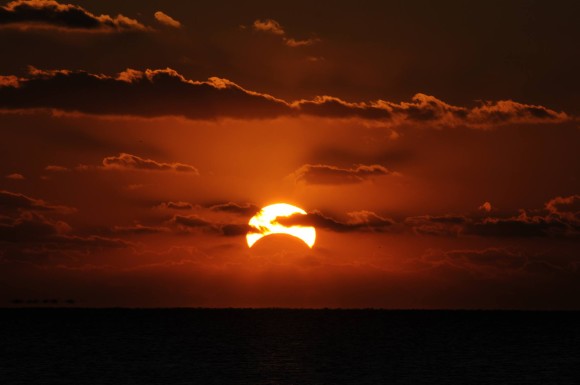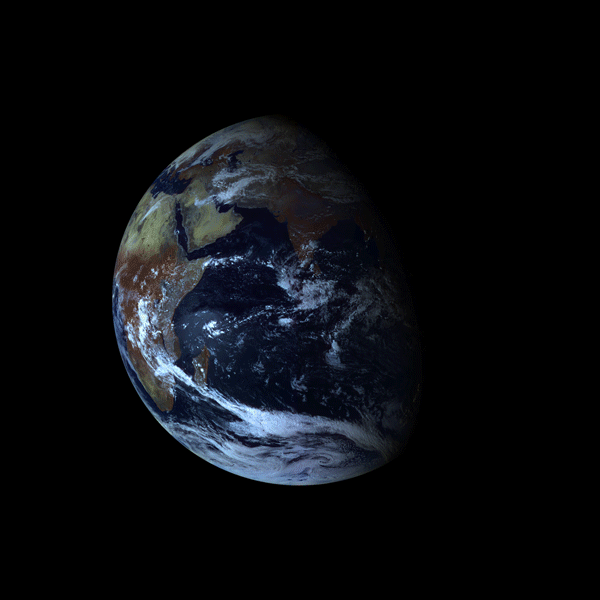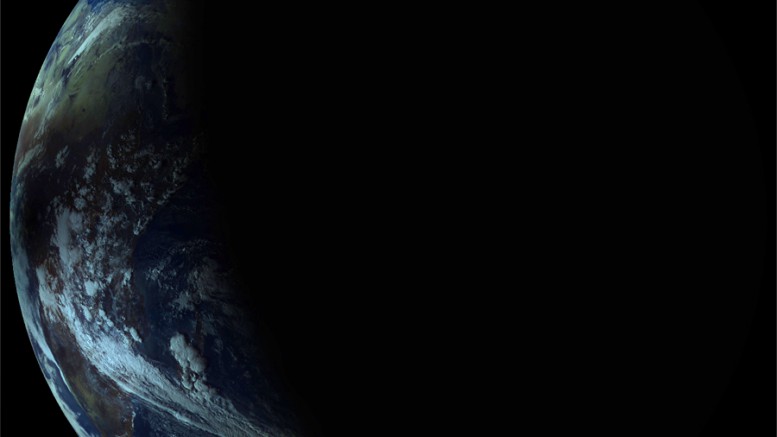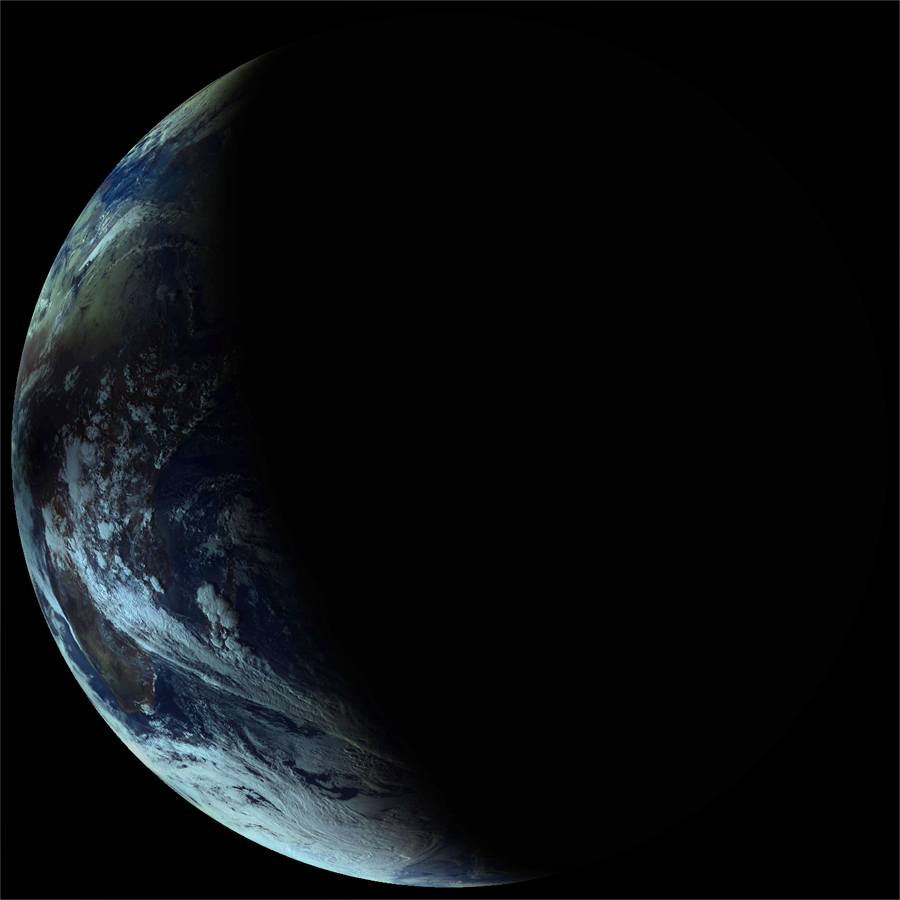Yesterday, a lunar shadow passed across Africa and the Atlantic Ocean. This event was the last solar eclipse this year. The Electro-L satellite was able to observe the eclipse, and we can see how darkness covers Africa.
Electro-L is located in a geostationary orbit and takes the Earth every 30 minutes from the same point, from a distance of 36 thousand km. Therefore, we are presented with a unique picture that cannot be seen even from the International Space Station.
A terrible, mysterious event, which probably ensured the annual revenue of many African shamans, is a curious astronomical phenomenon for us, the people of the future.

(c) Rick Taylor
And as researchers should be, we observe it from the side.

In May 2013, there was already a solar eclipse in Australia. Electro-L was also able to remove it. Moreover, at our request, Roscosmos changed the satellite’s operating mode , doubling the frequency of shooting. Thanks to this, we were able to better see the passage of the moon shadow across the mainland.
The African survey took place from a better angle and at the appropriate time of day, so the eclipse is clearly visible even without acceleration.
But now we are turning to Roscosmos with a more serious request – to launch a research probe on an asteroid. You can sign the petition . It is very easy to do through Facebook, but without it.


